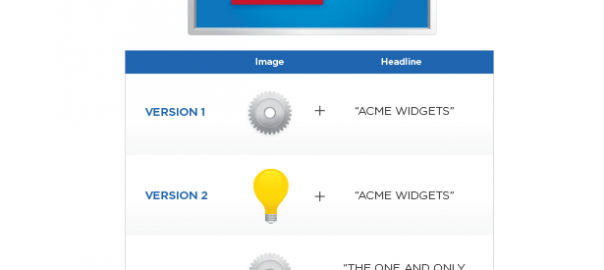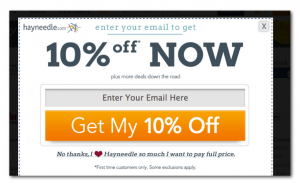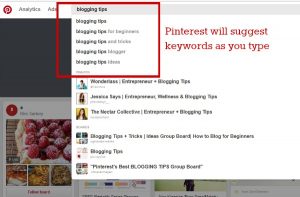
Unlike academic tests, A/B testing is actually fun. You can unleash your creativity by experimenting with different CTAs, tones, times, devices, and other modifiers (and there’s no pressure to score an ‘A’ either).
An A/B test is essentially a split test that focuses on the effectiveness of one aspect of your ad (e.g. the CTA). By comparing two versions, each with a different variation of that one aspect, you can determine which performs better.
This type of testing is great because it’s simple and accurate. As you conduct each test, you’ll narrow down what really makes people click and convert on your ads. And when an experiment is successful, there’s the potential to make a lot of money.
Improve your PPC campaign by trying one (or all 10) of these tests.
1. Add a CTA
Create a sense of urgency by adding a call-to-action (CTA) to your PPC ad. By making an offer that seems urgent (e.g. get a free quote now!), you’ll entice your customers to click immediately. And those clicks can potentially mean more conversions.
Use “click triggers” to make your CTA irresistible to customers. Common “click triggers” include no credit card required, testimonials, and key benefits. Add them underneath or beside the CTA button.
Also experiment with different extensions, including site links (free quotes, special financing, find an agent, etc.) or click-to-call.

Test two versions of your ad — one with a CTA and one without — and see which one performs better.
2. Experiment with Dayparting
Imagine marketing the drink True Blood (a drink for vampires from the show True Blood) during the day. The company would never get any customers since Bill Compton (a.k.a. Vampire Bill) and his brethren are nocturnal. Vampire Bill is a prime example of why companies need dayparting.
Dayparting allows you to schedule your ads at certain times. To find the right time slot for your audience, test throughout the day. With time (no pun intended), you’ll be able to determine whether your target customers are night owls, early birds, or parents who never sleep.
Once you know their viewing habits, simply adjust the time(s) your ad appears. Compare that one to the ad without dayparting. Don’t be surprised when you see the dayparting ad has more clicks.
3. Review Keyword Use
You’re probably already using keywords in your ad’s headline and description. (Good job!) However, you’re puzzled why your ad isn’t doing so well. Maybe you’re (gasp!) using the wrong keywords.
Keywords impact how your ad appears, so try some A/B testing to figure out why your ad isn’t performing better. Are there different variations of your keyword, or new long-tail keywords you can try? Pit different sets of keywords against one another and see which performs best, and adjust your campaign accordingly.
4. Change the Display URL
It’s common practice to use the company’s root domain as the display URL. But instead of using the root domain, why not use a subfolder relevant to the ad copy?
For instance, Blue Haven uses www.bluehaven.com/Delaware. This URL indicates Blue Haven has a Delaware branch. If they had only used www.bluehaven.com, it might not have had the same effect on Delaware searchers (like me).

It’s worth trying out different display URLs when the payoff is more conversions. See which one resonates best with your customers.
5. Manipulate White Space
People tend to be leery of white space for a number of reasons. Why leave empty space that could be filled up with more info? However, white space — when used correctly — has a positive impact on the overall look and readability of an ad.
Think about how much easier it is to skim an article when text isn’t crammed. White space helps with organizing information, making it easier to digest. By “embracing the emptiness,” you’re allowing buttons, links, text, and other media room to breathe. And keep in mind, white space doesn’t mean the absence of color, just less clutter.

Manipulate your white space and see how customers respond to the different layouts.
6. Explore Copywriting Techniques
Gone are the days of Mad Men copywriting. Steer clear of generic titles and blah copy. Think outside the box by using different Adwords Hacks. And try tightening up your ad copy, too. Efficient ways to enhance your copy include:
- Writing for your target demographic.
- Using dynamic keyword insertion.
- Incorporating industry specific jargon/buzzwords.
Refining your copy often increases comprehension and makes readers want to click. To see the difference, compare your original copy to a revamped version and see which one drives more traffic.
7. Tailor Audience Tones
When writing for different personas, use different tones to appeal to each persona’s ethos. Depending on the product and the persona, you might take on a serious, light-hearted, or comical tone.
Here, Disney Cruises is targeting families (specifically, parents). In its ad, Disney promises there’s something for everyone, and includes the keywords: families, fun-filled, and relaxation.

A family looking to take a vacation cruise will click because Disney is offering what they’re looking for. Follow Disney’s lead, and tweak your ad’s tone to see if you get a better response with a more refined pitch.
8. Include Testimonials
Give credibility to your ad by including customer testimonials. With social media, people will either gravitate toward or shy away from a product or service depending on many ‘Likes’ it gets.

Apply that same social integration concept to your PPC ad by including ratings. Here, Sports Authority features positive “testimonials” in the form of a star rating, service rating breakdown, and number of followers.

Compare your ad with ratings and without, to see if there’s a stark difference in clicks.
9. Insert Pricing
Test out the affect that pricing has on your customers. Create ads that include the price, and create ads that leave out the price. Compare your customers’ reactions to both, and adjust accordingly.
You may find that people are more willing to click if the cost details are up-front. Or depending on the cost of your product, you may be better off selling them on the idea first, and then giving them the price at the end. You won’t know what works until you try both.
10. Perform Multivariate Testing
Don’t assume you know what’s working or not working. Be absolutely sure by conducting multivariate testing.
Unlike A/B testing which compares one variable at a time, multivariate testing compares different combinations of variables to see which is the most effective. Multivariate is handy when picking between lots of different elements (e.g. headline, CTA, etc.). Here, Optimizely is testing two different widgets with two different headlines for four different combinations.
 Source: Optimizely
Source: Optimizely
Keep in mind for this method, you’ll need a lot of live traffic for the results to be statistically significant.
As you test, try anything and everything. You might just be surprised by what works best for your campaign!
Digital & Social Articles on Business 2 Community
(119)








